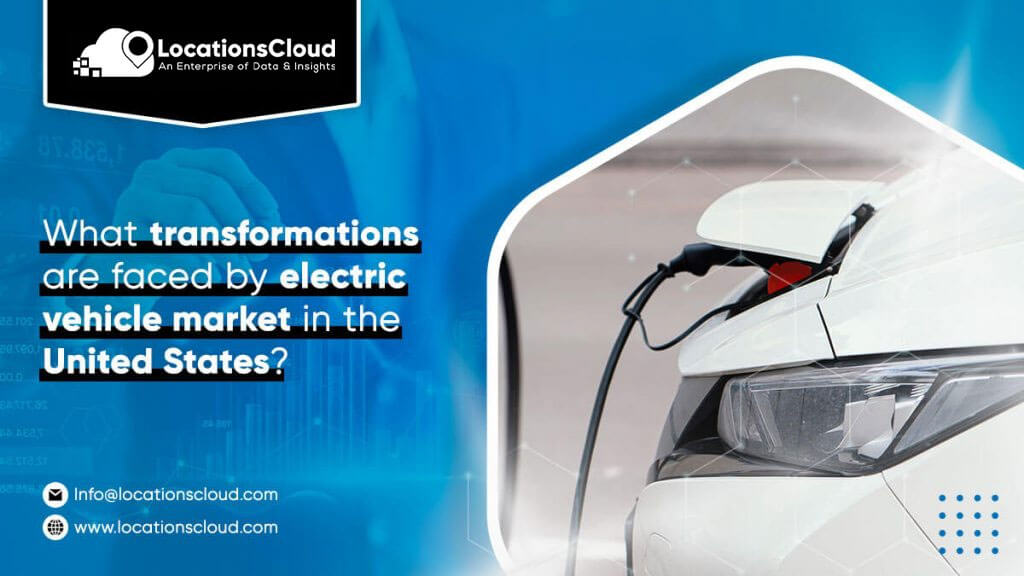
Evolving Electric Vehicle Market in the United States
Despite the pandemic, EV registrations increased significantly in the second half of 2020. In the same year, the market for electric vehicles expanded globally to $163.01 billion. There is no doubt that the use of EV is increased.
Zero-carbon solutions like electric cars are becoming more and more popular as more nations join the climate change agreement of Paris. In response, early adopters have access to innovative business opportunities.
Check out the global EV sales growth from year to year.
Global sales of battery-electric vehicle & plug-in hybrid passenger automobiles totaled close to 6.5 million in 2021. Global EV sales fell short of the long-term course in 2019 and 2020 due to COVID-19 and other restrictions. Sales recovered with a growth rate of 109% year over year in 2021.
EVs had a 10% market share of the entire auto industry in 2022. Let’s examine the global geographic distribution of EV sales while discussing the global Electric Vehicle market.
The Chinese EV sector has flourished internationally, thanks partly to government incentives and extensive government participation. Following the US and Europe with a significant increase in 2021 in EV sales.
According to research by the International Energy Agency, the US accounts for roughly 17% of 10.2 million Electric Vehicle currently in use worldwide. It’s interesting to note that the United States is active in this area, given the present ambition to dominate the EV game.
Critical Understandings on the Electric Vehicle Market
- Global sales of electric vehicles increased by 109% in 2021 to over 6.5 million units.
- California will sell one million electric vehicles in the US by 2022.
- With a 14% market share in sales of electric vehicles globally, Tesla is a pioneer in the US.
What’s going on in the United States market for electric vehicles?
It might be challenging to continue with the rapidly evolving electric vehicle sector. Additionally, unlike the manufacturers of gasoline-powered automobiles, those introducing electric vehicles do not have the same level of expertise.
However, the United States has displayed a tremendous development trajectory over the past few years. The number of EVs sold in the US increased from a few in 2010 to over 315,000 in 2018 and 2020.
This map displays the US State wise distribution and registrations of electric vehicle.
The geographic breakdown of EV registrations shows that EV adoption has not increased uniformly across all states. The state with the most EV registrations is unmistakably California. In light of that, let’s see which other US states lead the EV race.
Leading 10 States of the US for EV Sales
There will be 2,147,070 electric vehicles in the US as of September 30, 2021. Sales of Florida is 108,749 electric vehicles, with New York coming in second with 106,024 sales. Despite the dramatic disparity in numbers, Florida follows California with an EV market on the rise.
Let’s now examine some of the specifics of the California Electric Vehicle market.
The Highest Sales of EVs is in California.
California sold 1 million electric automobiles in the US for the first time in 2022. The state provides adequate incentives for drivers to switch to EVs. Among these benefits are rebates, insurance savings, and federal credits of tax.
The three biggest EV markets in California are San Diego, San Francisco, and Los Angeles. These markets are beginning to be dominated by well-known car brands. Here is a look at their sales data:
In California, Toyota and Chevrolet are second and third in the Electric Vehicle sales race, respectively, as shown in the graph above. latest battery technology, a unified computer architecture, a reliable charging infrastructure, and a public image that epitomizes innovation and modernity are just a few of Tesla’s competitive advantages over rivals. From 2019 to 2021, let’s examine Tesla’s performance in the US auto market.
Tesla is the Market Leader
The most popular battery technology, according to Tesla is the market leader of Electric Vehicle is based on lithium. The raw materials demand has grown as EV sales have accelerated, driving up the cost of battery components.
The US only has mega factories of 12 battery to meet regional EV demand. Since 2015, Tesla has had the luxury of producing its batteries here. As on 2021, Tesla and Panasonic will work together to produce automobile batteries.
Model X is the next Tesla model, then Model 5. The graph shows the Model 3 of Tesla had the highest sales volume at 2,963,90 units. Stimulatingly, Tesla did not introduce the Model 3 until 2018.
Legacy automakers are also moving into the EV market to keep up with Tesla’s expansion. A subsidiary of General Motors, BrightDrop vans, was introduced in 2021 to promote sustainability initiatives in the logistics and delivery industry. Even electric medium- and heavy-duty trucks are being considered by some.
Robust charging infrastructure is essential as more companies transition to spotless energy options. In the following part, let’s take a detailed look at the infrastructure of EV charging.
Infrastructure for EV Charging in the United States
During the last quarter, every EV sold took an ICE vehicle off the road. Consumers are worried about the difficulties associated with EVs, such as the time it takes to charge, finding charging stations, and scheduling charge stops along lengthy routes.
EV charging businesses have recently worked on the feel and look of charging infrastructure to improve the consumer experience. In light of that, let’s examine charging infrastructure of EV in the US, both public and private.
The amount of EV charging stations in the US increased significantly between 2015 and 2020. 2021 saw a 55% increase in charging stations. There are less than 46000 EV charging stations in the US publicly, despite EVSE ports continually increasing in quantity.
Let’s look at the types of chargers used at charging stations in the US to gain a better understanding of charging stations.
Varieties of Chargers
Level 1, 2, and DC Fast charging are the three different kinds of EV chargers.
Level 1 chargers might take up to 24 hours to fully charge an empty EV battery. Because this occurs in household settings, there are insufficient data.
In the US, Level 2 chargers are the most common and can fully charge an EV in less than eight hours. There will be more than 91000 L2 chargers in use by 2021.
EV batteries can be charged in 20 to 40 minutes using direct current fast chargers (DCFCs). By 2021, there were 24% more DC fast chargers than the previous year.
Now when you know more about EV chargers let’s see at the businesses having best infrastructure of charging.
Network Performance Charging
Although 80% of vehicles are charged at home, a strong charging infrastructure is necessary to give consumers confidence in EV ownership. Electrify America placed first in the rating, as you can see. Tesla and ChargePoint were the ones that came next. The rating took into account the charging station environment as well as the technical performance of the chargers.
The fact that some gas stations already enable EV charging is noteworthy. Learn more in the next segment:
Quantity of fuel stations with EV charging capabilities
The US had less than 1000 charging stations till 2010. Fuel stations that offer EV charging have dramatically expanded from 50000 as of 2021. Over 50% fuel stations now offer EV charging, indicating an increase in EV charging stations. It’s interesting to note that large oil firms like BP are moving toward electrification.
BP has purchased Amply company that is EV charging provider in the United States to facilitate network convenience of charging in the US.
In conclusion, even though the EV market in the US is undoubtedly noisy, customers are nonetheless interested in learning more. The general public who are calculating incentives, maintenance savings, pricing, tax credits, residual value and other factors need to be contacted by automakers and retailers. Let’s recap what’s coming up for EVs.
Difference Between Electricity Prices and Gas Prices
The national average for the US demonstrates how petrol prices have risen since November 2020. In February 2022, it reached an average of $14.08. However, in 2022, the cost of power will only be $5.14 on average.
EVs are not only cost-effective but also release significantly less CO2 and are environmentally beneficial. To prove this claim, let’s examine the annual CO2 emissions from various fuel kinds.
According to the national average, EVs generate minor CO2 equivalent emissions compared to vehicles powered by gasoline. The annual CO2 emissions from one electric vehicle can be cut by 1.5 million grams.
Tesla used to be the sole option for people looking to transition to eco-friendly vehicles. Understandably, many well-known brands seek to compete, given the established climate change targets.
Are you preparing to enter the market for electric vehicles as well? You want to finance in steadfast POI location data to compete well with the competitors.


